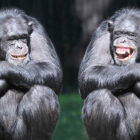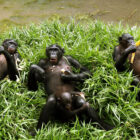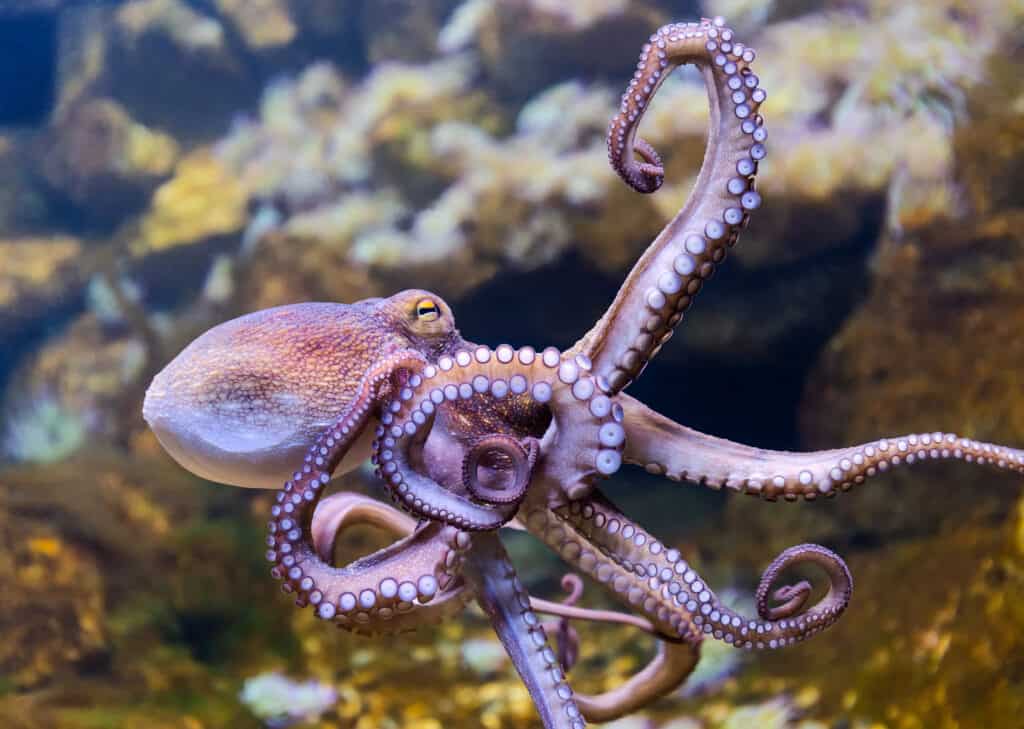Do Apes Like To Tease And Joke?
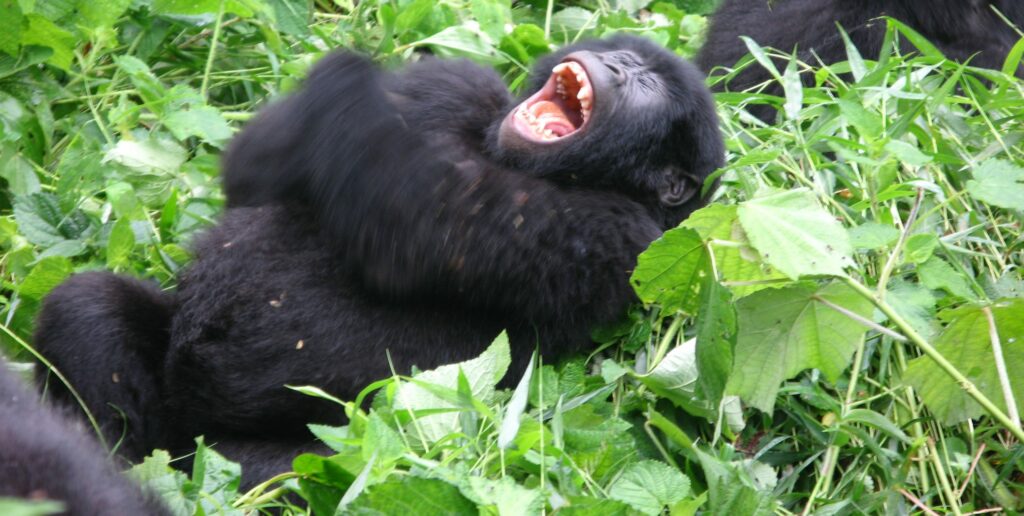
Teasing and joking in apes are complex behaviors that draw on a range of cognitive abilities, including understanding social norms, theory of mind, and anticipating others’ responses. These behaviors are typically seen as a hallmark of human social interaction, but researchers have begun to wonderto which degree our closest relatives, the great apes, also exhibit similar behaviors.
The Cognitive Complexity of Teasing
The playful teasing observed in great apes, as well as in human infants, is a manifestation of cognitive abilities that are deeply rooted in social interactions. These abilities include understanding social norms, theory of mind (the ability to attribute mental states to oneself and others), anticipating others’ responses, and deriving enjoyment from the violation of others’ expectations.
Teasing involves a deliberate intent to provoke a reaction from another individual, often by violating their expectations in a playful manner. This requires not only an understanding of the other individual’s mental state but also an ability to predict their response and derive pleasure from the interaction.
For example, teasing often involves attention-getting behaviors, such as making eye contact or vocalizing, to draw the target’s attention. It also frequently includes behaviors that indicate the intention to provoke, such as approaching the target or making a sudden movement.
Playful teasing is also characterized by repetition and elaboration. This means that the teaser may engage in the same behavior multiple times, or they may escalate their behavior over time to elicit a stronger response from the target. This suggests that teasing is not only about provoking a reaction but also about maintaining and building upon the interaction.
The Development of Teasing in Apes and Humans
In human infants, playful teasing emerges very early, even before they start producing their first words, as young as 8 months old. Although the teasing of human infants is not as cognitively complex as adult forms of joking, it is likely that the social and conceptual building blocks of joking, such as understanding others’ expectations and deriving enjoyment from violating them, are already present in infants’ teasing.
Similarly, in great apes, playful teasing appears to be a natural and early-emerging behavior. In a study of zoo-housed great apes, it was found that all four species engaged in intentionally provocative behavior, frequently accompanied by characteristics of play.
Teasing in great apes is characterized by several key features. It is typically asymmetric, with the teaser leading the interaction and often starting the teasing event one-sided. Additionally, teasing often contains an element of surprise, such as an approach from behind followed by a startled response from the target. This indicates that teasing is not only about provoking a reaction but also about maintaining and building upon the interaction.
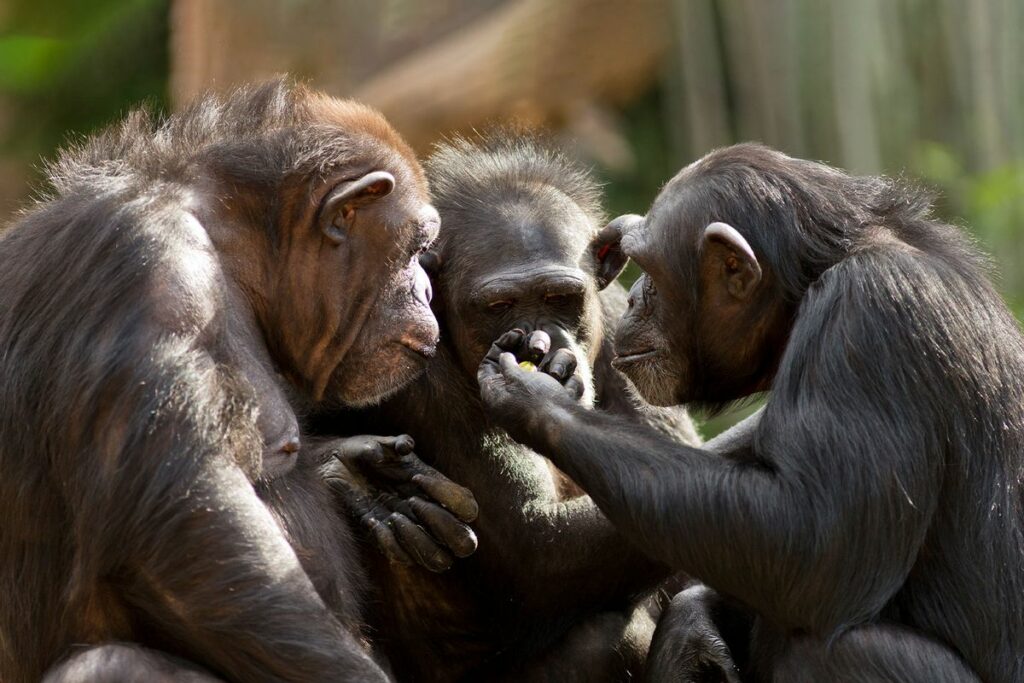
The Study of Teasing in Great Apes
The study of teasing in great apes is a relatively new area of research, but it is one that promises to shed light on the cognitive and social abilities of these remarkable creatures.
To study teasing in great apes, researchers developed a coding system to identify playful teasing in video recordings of zoo-housed great apes. This system was used to analyze 75 hours of video, which was evenly split across the four great ape species: chimpanzees, bonobos, gorillas, and orangutans.
The researchers extracted clips containing any spontaneous social interactions that appeared playful, harassing, or otherwise provocative. They then coded these interactions for various behaviors, such as attention-getting, one-sidedness, response looking, repetition, and elaboration/escalation.
Findings
The researchers found that all four species of great apes engaged in teasing behavior, which was often accompanied by characteristics of play. Teasing was typically characterized by attention-getting, one-sidedness, response looking, repetition, and elaboration/escalation.
Teasing was also found to take place mainly in relaxed contexts, such as during play or social grooming. However, teasing differed from play in several ways, such as its asymmetry, low rates of play signals like the playface, and the absence of movement-final ‘holds’ characteristic of intentional gestures.
Overall, the study of teasing in great apes has provided valuable insights into the cognitive and social abilities of these animals. It suggests that teasing is a natural and early-emerging behavior that likely evolved in the hominoid lineage at least 13 million years ago. It also highlights the importance of social interactions in the lives of great apes and the role of teasing in maintaining and building relationships within their social groups.
Characteristics of Playful Teasing
The playful teasing observed in great apes is a complex behavior that involves a variety of characteristics.
One of the key characteristics of playful teasing is its attention-getting nature. Teasers often engage in behaviors that are designed to draw the target’s attention, such as making eye contact, vocalizing, or approaching the target. This suggests that teasing is a deliberate and intentional behavior that is meant to provoke a reaction from the target.
Teasing is typically characterized by one-sidedness, with the teaser leading the interaction and often starting the teasing event one-sided. This suggests that teasing is not a mutual or reciprocal behavior, but rather one that is initiated and led by the teaser.
Teasers often look towards the target’s face during the interaction, presumably to monitor their response. This suggests that teasing is a socially motivated behavior, rather than an aggressive one.
Teasing differs from play in several ways. It is typically asymmetric, with the teaser leading the interaction, and it often contains an element of surprise, such as an approach from behind followed by a startled response from the target. Additionally, teasing is characterized by low rates of play signals like the playface and the absence of movement-final ‘holds’ characteristic of intentional gestures.
Age-Related Differences in Teasing
The researchers found that the juveniles were involved in the vast majority of the teasing events in the video corpus. This suggests that teasing is not only a natural behavior but also one that is often initiated and led by younger individuals. In the observations, teasers led the interaction, with most teasing events starting one-sided. This indicates that teasing is not a mutual or reciprocal behavior, but rather one that is initiated and led by the teaser.
Juveniles appeared to tease more than adults and often employed different behaviors. For example, in chimpanzees and bonobos, juveniles used more play signals, such as the playface, than adults. Additionally, in chimpanzees, juveniles used more intentional gestures, such as movement-final ‘holds,’ than adults. This suggests that there is an interaction between age and species, with different patterns of play signal use in adult and juvenile chimpanzees and bonobos.

